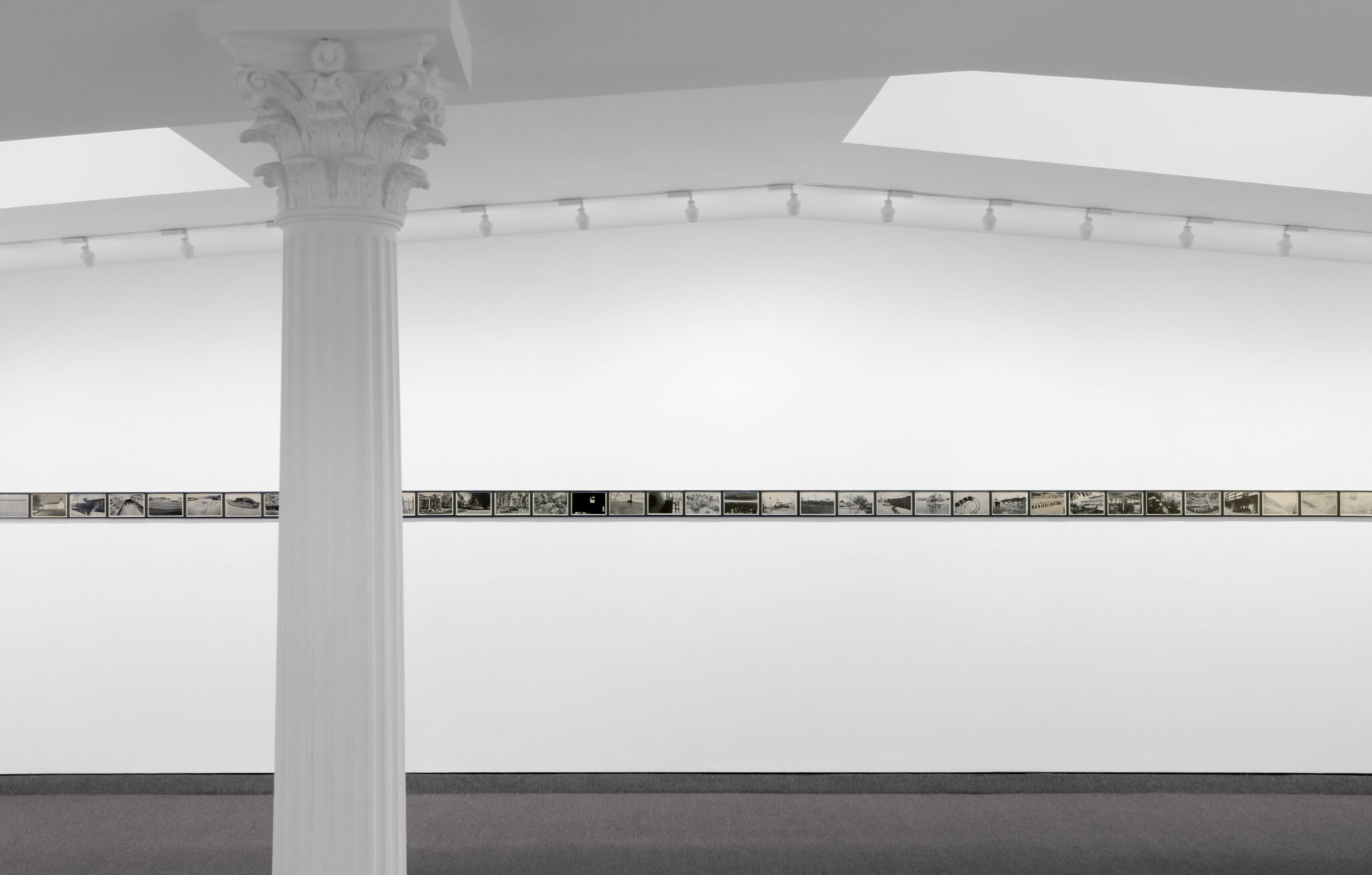
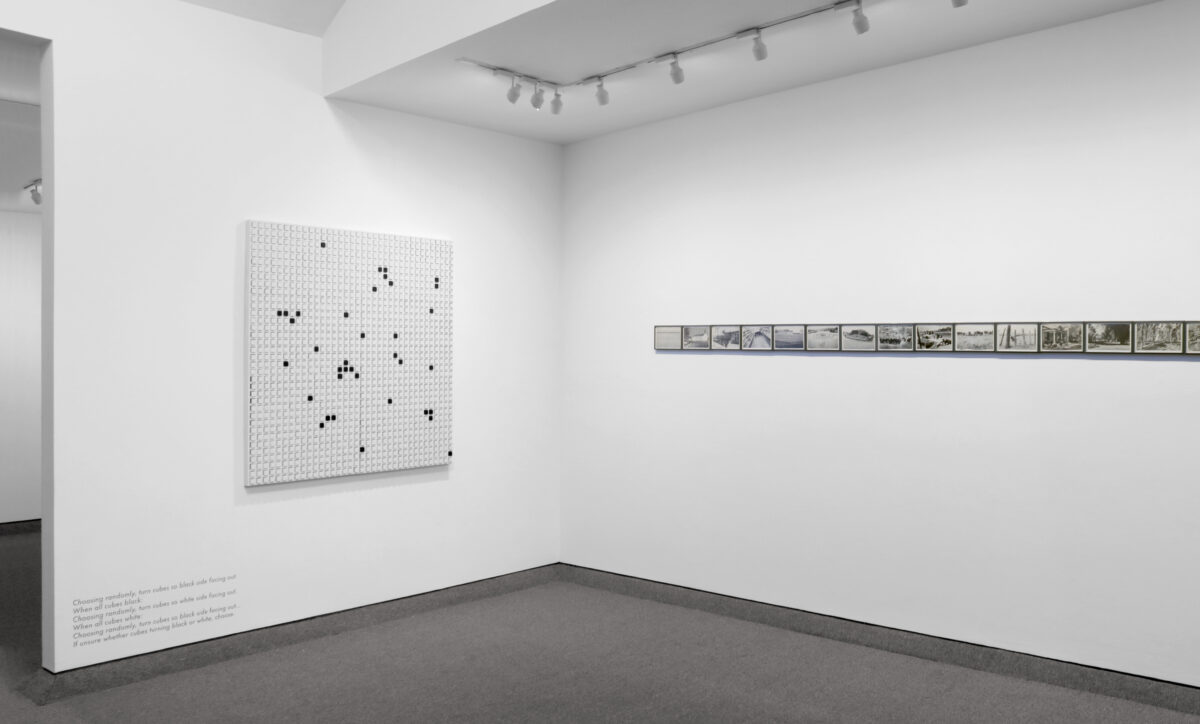
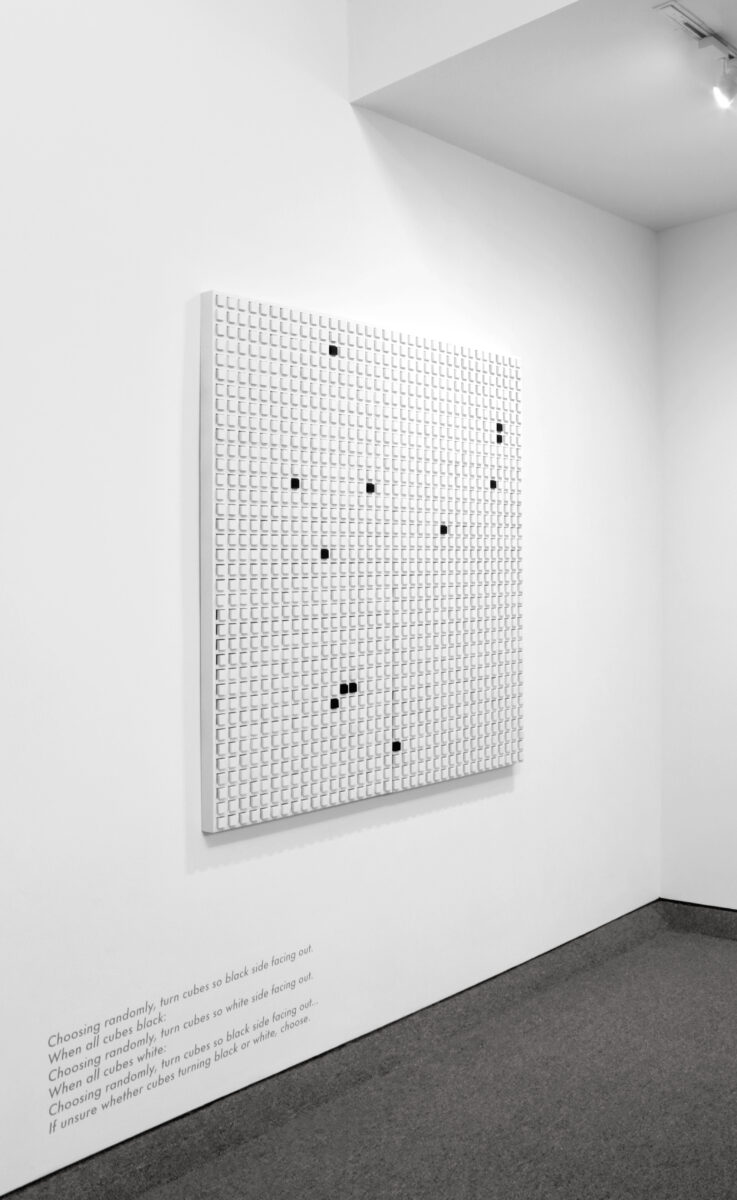
White, wall-mounted case containing 1,296 acrylic-painted wooden cubes (each cube painted half white and half black)
Signed, dated and titled, verso
At first, all cubes turned so white half facing out, black half concealed.
Working instructions:
“Choosing randomly, turn cubes so black side facing out.
When all cubes black: Choosing randomly, turn cubes so white side facing out.
When all cubes white: Choosing randomly, turn cubes so black side facing out…
If unsure whether cubes turning black or white, choose.”
Notes:
Instructions as much part of installation as other elements
Audience does not always follow instructions/interprets instructions; this is part of the art.
(Inventory #31558)
White, wall-mounted case containing 1,296 acrylic-painted wooden cubes (each cube painted half white and half black)
Signed, dated and titled, verso
At first, all cubes turned so white half facing out, black half concealed.
Working instructions:
“Choosing randomly, turn cubes so black side facing out.
When all cubes black: Choosing randomly, turn cubes so white side facing out.
When all cubes white: Choosing randomly, turn cubes so black side facing out…
If unsure whether cubes turning black or white, choose.”
Notes:
Instructions as much part of installation as other elements
Audience does not always follow instructions/interprets instructions; this is part of the art.
(Inventory #31558)
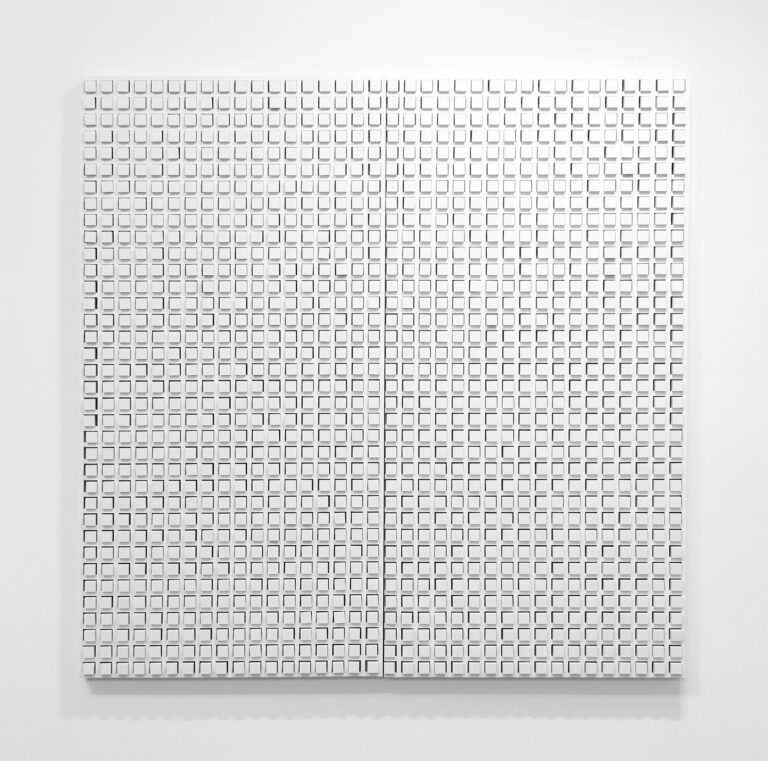
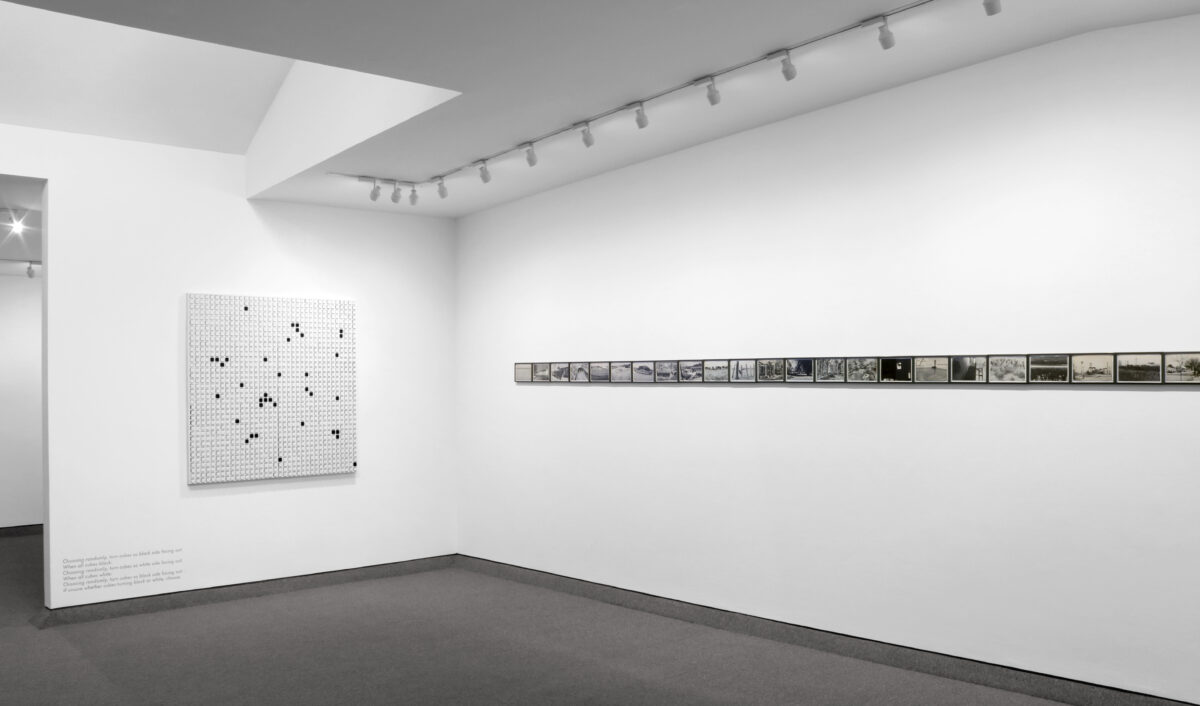
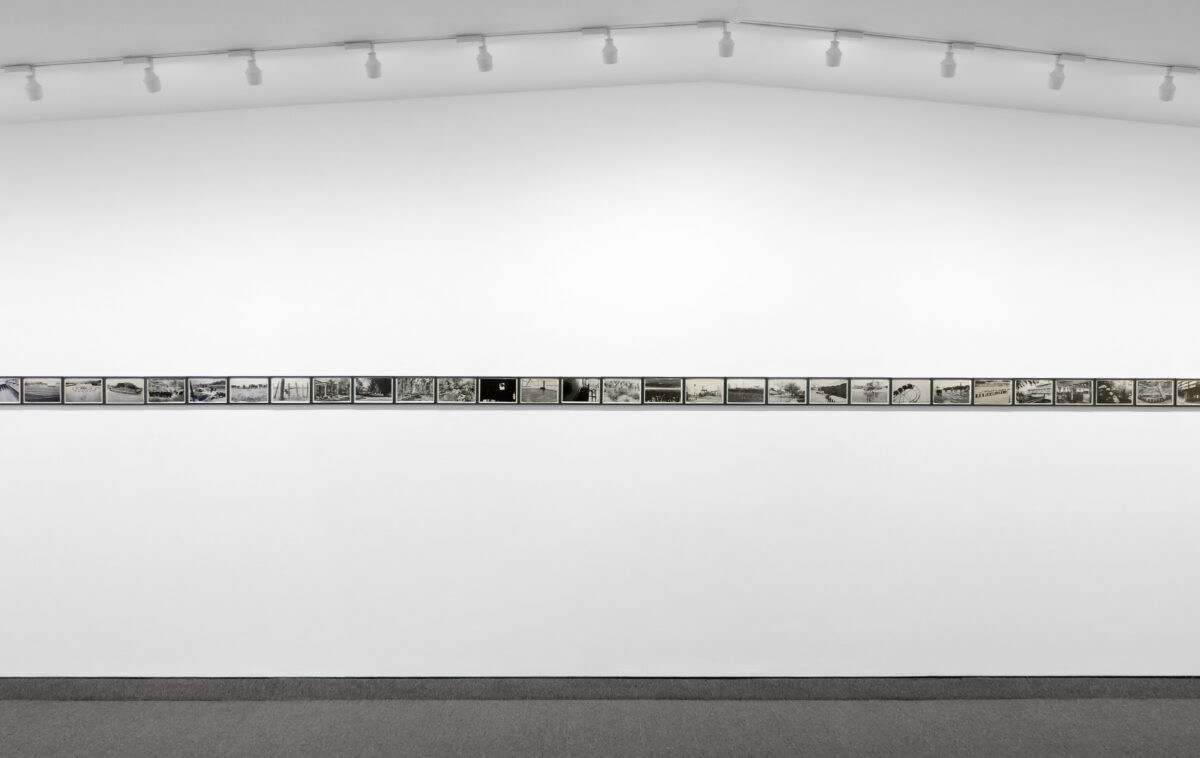
Postcard size: 4 1/2 x 7 inches each (11.4 x 17.8 cm)
Framed size: 5 1/2 x 8 1/16 inches each (14 x 20.5 cm)
(Inventory #31077)
Postcard size: 4 1/2 x 7 inches each (11.4 x 17.8 cm)
Framed size: 5 1/2 x 8 1/16 inches each (14 x 20.5 cm)
(Inventory #31077)
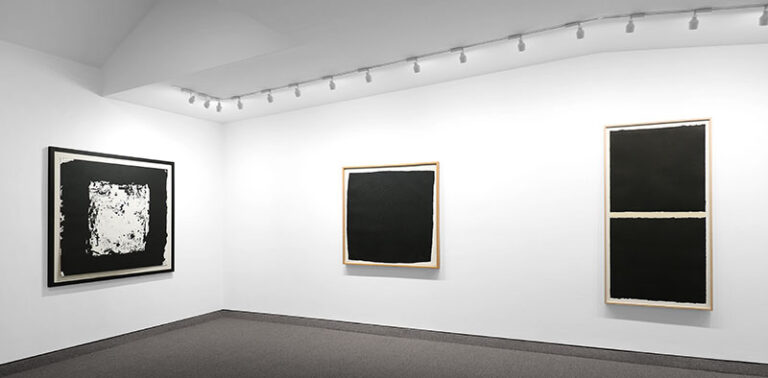
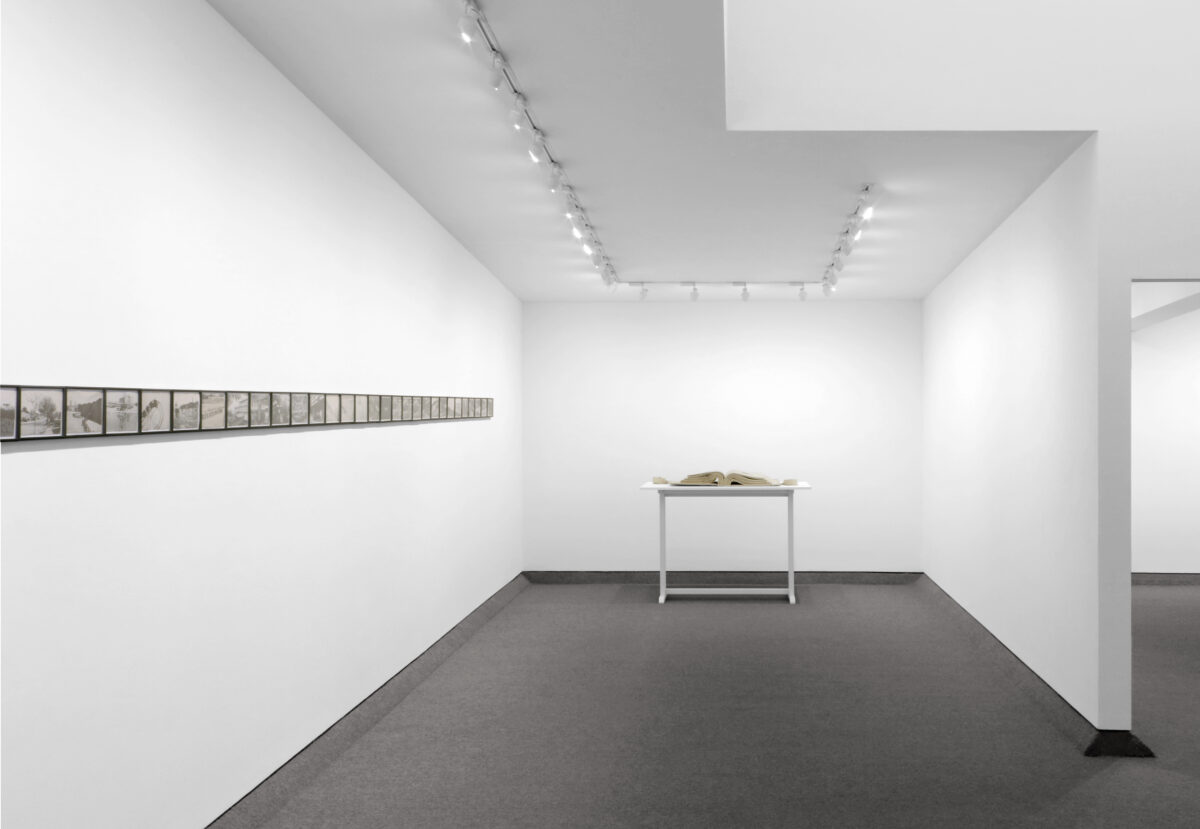
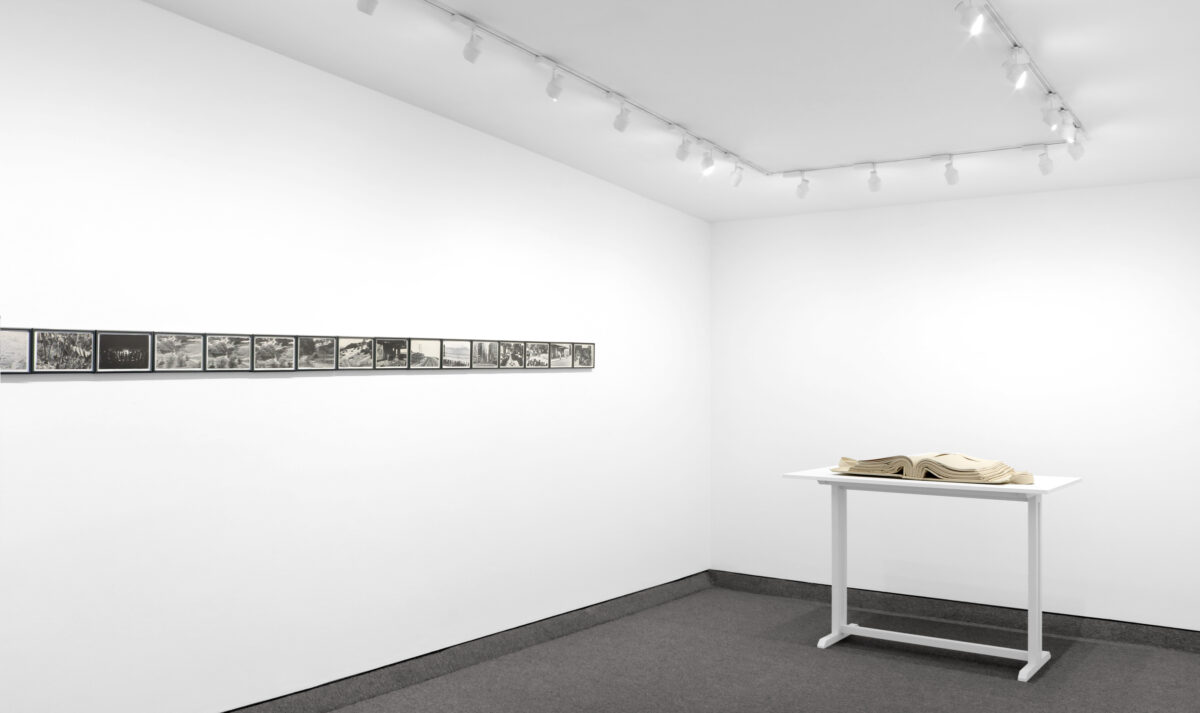
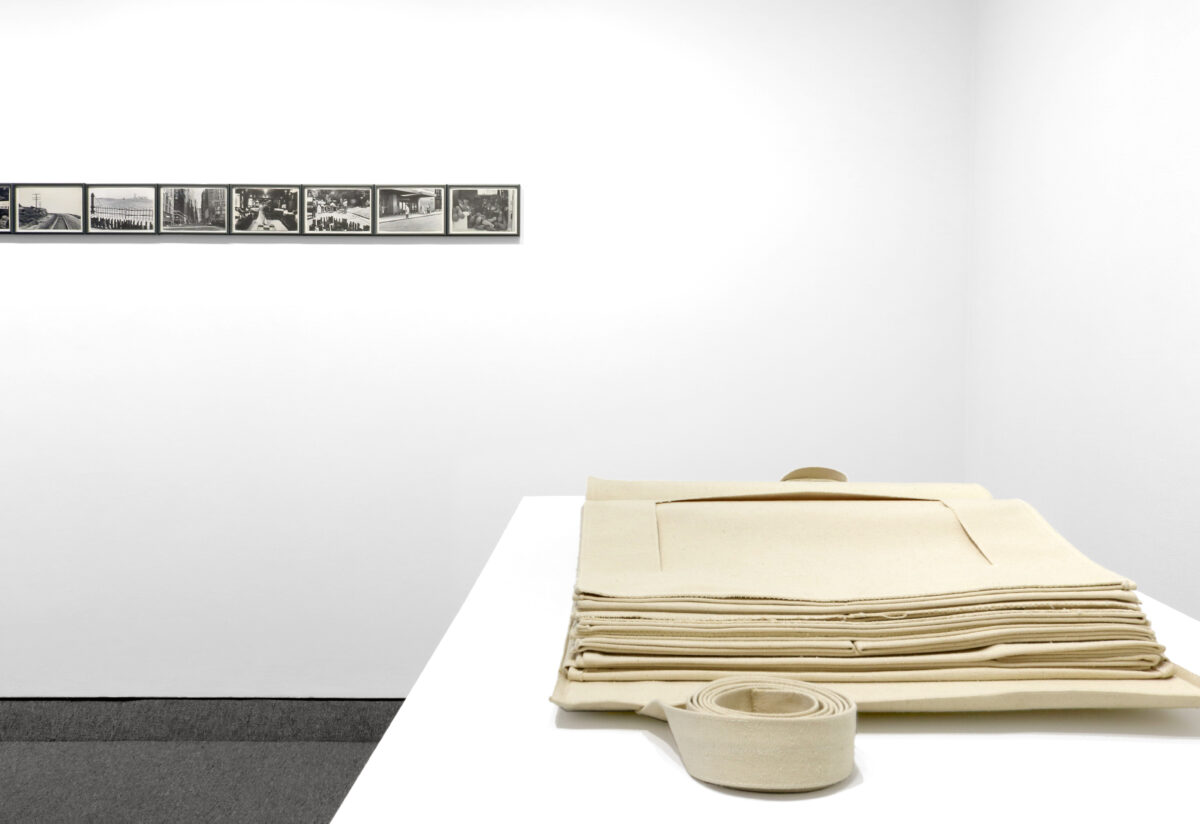
Edition of 80
19 1/4 x 15 1/4 x 4 1/4 inches (49 x 39 x 11 cm)
Signed and dated in ink with publisher’s stamp and edition number on inside of binding
(Inventory #32343)
Edition of 80
19 1/4 x 15 1/4 x 4 1/4 inches (49 x 39 x 11 cm)
Signed and dated in ink with publisher’s stamp and edition number on inside of binding
(Inventory #32343)
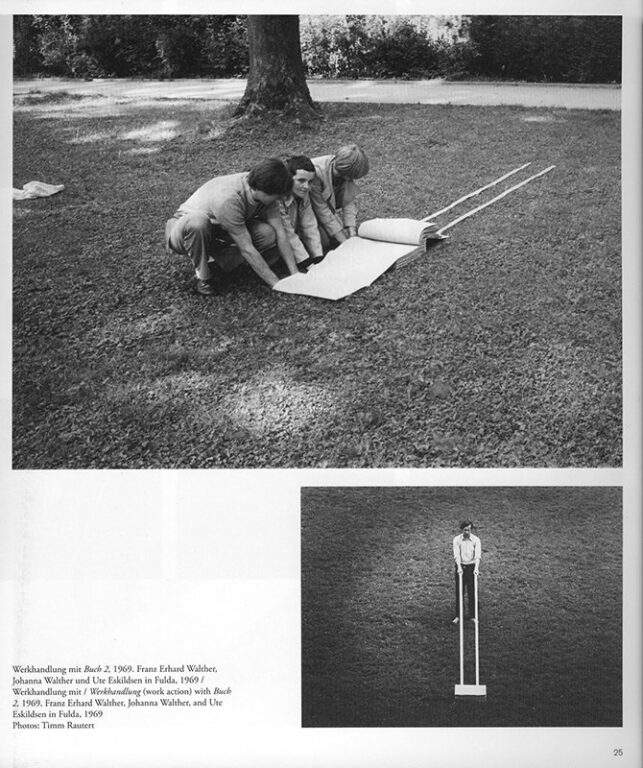
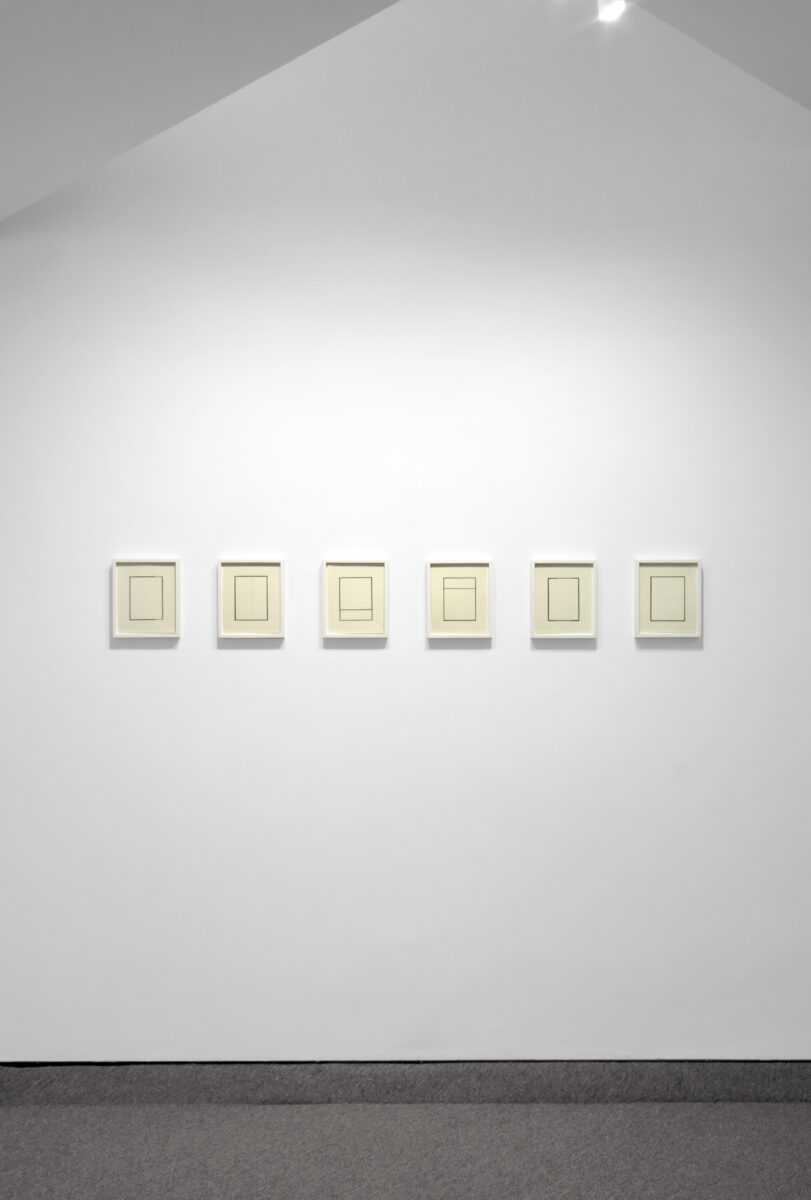

Paper size: 8 x 6 1/2 inches (20.3 x 16.5 cm)
Frame size: 9 3/8 x 7 5/8 inches (23.8 x 19.4 cm)
Signed and dated on reverse in graphite
(Inventory #33584)
Paper size: 8 x 6 1/2 inches (20.3 x 16.5 cm)
Frame size: 9 3/8 x 7 5/8 inches (23.8 x 19.4 cm)
Signed and dated on reverse in graphite
(Inventory #33584)
Paper size: 8 x 6 1/2 inches (20.3 x 16.5 cm)
Frame size: 9 3/8 x 7 11/16 inches (23.8 x 19.5 cm)
Signed and dated on reverse
(Inventory #33585)
Paper size: 8 x 6 1/2 inches (20.3 x 16.5 cm)
Frame size: 9 3/8 x 7 11/16 inches (23.8 x 19.5 cm)
Signed and dated on reverse
(Inventory #33585)
Paper size: 8 x 6 1/2 inches (20.3 x 16.5 cm)
Frame size: 9 3/8 x 7 5/8 inches (23.8 x 19.4 cm)
Signed and dated on reverse
(Inventory #33586)
Paper size: 8 x 6 1/2 inches (20.3 x 16.5 cm)
Frame size: 9 3/8 x 7 5/8 inches (23.8 x 19.4 cm)
Signed and dated on reverse
(Inventory #33586)
Paper size: 8 1/2 x 6 5/8 inches (21.6 x 16.8 cm)
Frame size: 10 x 8 inches (25.4 x 20.3 cm)
Signed and dated on reverse
(Inventory #33587)
Paper size: 8 1/2 x 6 5/8 inches (21.6 x 16.8 cm)
Frame size: 10 x 8 inches (25.4 x 20.3 cm)
Signed and dated on reverse
(Inventory #33587)
Paper size: 8 x 6 1/2 inches (20.3 x 16.5 cm)
Frame size: 9 1/8 x 7 5/8 inches (23.2 x 19.4 cm)
Signed and dated on reverse
(Inventory #33588)
Paper size: 8 x 6 1/2 inches (20.3 x 16.5 cm)
Frame size: 9 1/8 x 7 5/8 inches (23.2 x 19.4 cm)
Signed and dated on reverse
(Inventory #33588)
Paper size: 8 x 6 1/2 inches (20.3 x 16.5 cm)
Frame size: 9 1/8 x 7 5/8 inches (23.2 x 19.4 cm)
Signed and dated on reverse
(Inventory #33589)
Paper size: 8 x 6 1/2 inches (20.3 x 16.5 cm)
Frame size: 9 1/8 x 7 5/8 inches (23.2 x 19.4 cm)
Signed and dated on reverse
(Inventory #33589)
No results found.
10 Newbury Street, Boston, Massachusetts 02116
617-262-4490 | info@krakowwitkingallery.com
The gallery is free and open to the public. Please note our summer schedule:
July 1–25
Tuesday – Friday, 10–5:30
July 29 – September 1
Open by appointment
Beginning September 2
Tuesday – Saturday, 10–5:30